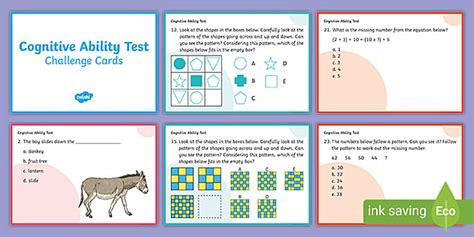Introduction
Cats are captivating creatures that have long fascinated humans with their enigmatic behavior and remarkable cognitive abilities. Their intelligence extends far beyond their feline appearance, boasting a range of cognitive skills that rivals even some primates. This article aims to delve into the depths of cat cognitive abilities, exploring the latest scientific findings and unraveling the secrets behind these extraordinary animals.

Understanding Cat Cognitive Abilities
Cats possess a wide array of cognitive abilities that enable them to navigate their environment, solve problems, and learn new things. These abilities include:
1. Memory
Cats have excellent memories, capable of recalling both short-term and long-term information. Studies have shown that cats can remember the location of hidden objects for up to 10 minutes and even longer with training. Additionally, they can recognize familiar faces and places, indicating a remarkable capacity for long-term memory retention.
2. Problem-Solving
Cats are adept problem-solvers, using their intelligence to overcome obstacles and achieve goals. They have been observed using tools, such as sticks or their claws, to retrieve objects or open doors. This ability demonstrates their capacity for insight learning, where they gain knowledge through trial and error.
3. Communication
Cats communicate through a range of vocalizations, body language, and facial expressions. They can convey their needs, emotions, and intentions to both humans and other cats. This complex communication system reflects their advanced cognitive abilities and social awareness.
4. Social Cognition
Cats have the ability to understand social cues and interact with others in a complex manner. They recognize familiar individuals, establish social hierarchies, and engage in cooperative behavior. These social cognition skills facilitate group living and survival in their natural environment.
5. Learning
Cats have a strong capacity for learning, both through association and reinforcement. They can learn to associate specific sounds or objects with rewards or punishments, adjusting their behavior accordingly. This learning ability allows them to adapt to new environments and situations.
Key Findings from Scientific Research
Numerous scientific studies have shed light on the cognitive abilities of cats. Here are some notable findings:
- According to a study by the University of Lincoln, cats have the ability to recognize their own name, demonstrating their capacity for self-awareness.
- Researchers at the University of Bristol found that cats can understand human emotions by observing facial expressions.
- A study by the University of Tokyo showed that cats can perform basic arithmetic tasks, such as addition and subtraction.
Practical Applications of Cat Cognitive Abilities
The understanding of cat cognitive abilities has practical implications for both cat owners and researchers. By leveraging their cognitive strengths, we can enhance our interactions with them and create a more enriching environment for their well-being. Here are a few examples:
1. Training and enrichment
Cat owners can use their cats’ learning abilities to train them new behaviors, such as using a litter box or playing fetch. Additionally, providing mentally stimulating activities, such as puzzles and hiding treats, can help keep their minds active and reduce boredom.
2. Veterinary care
Veterinarians can utilize cats’ problem-solving abilities to assess their physical and cognitive health. For instance, observing how a cat interacts with obstacles or retrieves objects can provide insights into potential neurological or sensory impairments.
3. Animal welfare
Understanding cat cognitive abilities helps us create better shelters and living environments for stray and rescue cats. By providing them with appropriate social and cognitive stimulation, we can improve their overall welfare and reduce stress levels.
Future Trends in Cat Cognitive Research
The field of cat cognitive research is rapidly evolving, with new discoveries being made all the time. Here are a few areas that show promise for future research:
1. Artificial intelligence (AI)
AI techniques can be used to analyze cat behavior and communication, providing us with deeper insights into their cognitive processes. This collaboration between AI and animal behavior can lead to groundbreaking advancements in our understanding of cat intelligence.
2. Comparative cognition
Comparing the cognitive abilities of cats to other species, such as dogs and primates, can help us identify unique adaptations and evolutionary pressures that have shaped their cognitive development.
3. Cat-human interaction
Exploring the cognitive processes involved in cat-human interactions can lead to improved communication and bonding between humans and their feline companions. This research has the potential to enhance our understanding of animal-assisted therapy and human-animal relationships.
Conclusion
Cats are highly intelligent creatures with remarkable cognitive abilities that extend beyond their adorable appearance. By understanding their memory, problem-solving, communication, social cognition, and learning abilities, we can enhance our interactions with them, improve their well-being, and open up new avenues for scientific research. As the field of cat cognitive research continues to evolve, we can expect even more exciting discoveries and insights into the fascinating minds of these enigmatic animals.





















